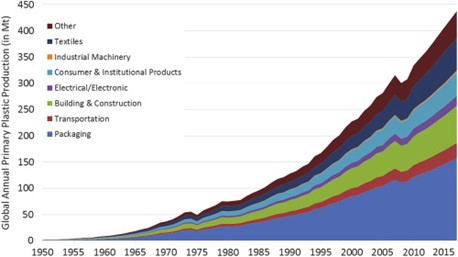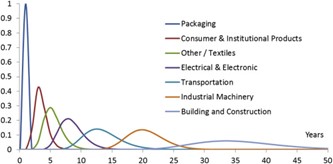Plastic: What is it and what is the problem?
Most modern plastic is synthetic material produced from fossil fuel. Celluloid was invented in the late 19th century by chemical modification of cellulose, but...
Read more
These materials have enabled industrial development on a huge scale: advantageous properties include tensile strength, lightness, electrical insulation and water resistance.
In construction this is important for a wide range of applications including: wiring and cabling, utility provisions, and materials used in production of windows, some roofing, gutters and drainpipes, as well as in flooring, wall coverings, and furniture and furnishings. The development of electronic control systems is also dependent on modern plastics.
Plastics specifically used in construction include PVC which is typically used in pipes, hoses, cable insulation, window and door frames. Polyurethane (PUR) is widely used for foam products, often in furnishings but along with polystyrene finds applications in insulation. Other thermoplastics used in engineering and construction include polycarbonate, polymethyl acrylate, and polytetrafluoroethylene, otherwise better known as Teflon.
While there has been much publicity about packaging in the food industry, this is also a major issue in the construction supply chain. Single-use plastic wrapping is ubiquitous Another example is that many materials are transported in plastic pails or buckets. These are cheap, lightweight to transport and handle, and have a lifespan sufficient for their primary purpose. Typical products for which these are used include: paints and coatings, industrial chemicals, petroleum, lubricants, solvents and adhesives. Worldwide the plastic pails market was valued at UD$ 5,969 million in 2020, with a predicted annual growth rate of approximately 3.6% over the next five years (Global Plastic Pails Market Report, 2020).
In the office or on site; It has been estimated that 0.5 × 1012 (half a trillion) plastic bottles will be sold globally in 2020 (https://news.nationalgeographic.com/2018/05/plastics-facts-infographics-ocean-pollution/). Packaging is the largest proportion of plastic production at around 40% of the total – 161m tons per year in the USA) but the construction industry is the second largest contributor (72m tons annually in the USA), according to research from Roland Geyer at the University of California, Santa Barbara in 2018.
The diagram below shows the growth of plastic production and the sectors where it is used.

Global annual primary plastics production (in Mt) by consuming sector from 1950 to 2017.
The lifetime of plastic products varies significantly by sector; the figure below, reproduced with permission from Roland Geyer, shows that packaging and consumer products have by far the shortest lifespan; while some materials used in construction may have a lifespan extending to decades, a significant proportion may last only a few years.
Product lifetime distributions: From R. Geyer, J. Jambeck, K. Lavender Law
Production, use, and fate of all plastics ever made
Sci Adv, 3 (7) (2015), p. e1700782
